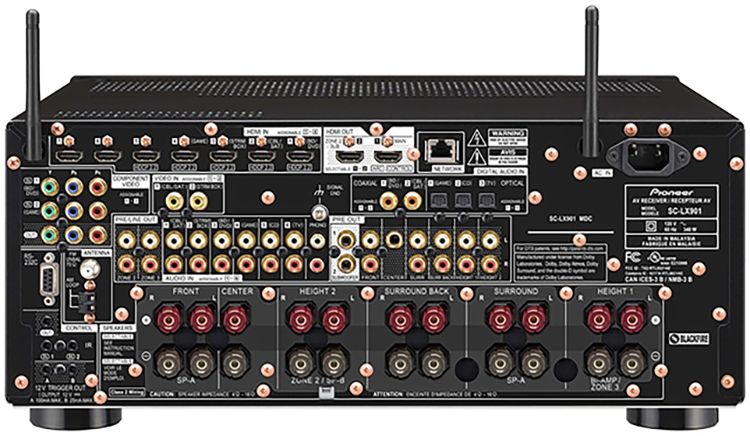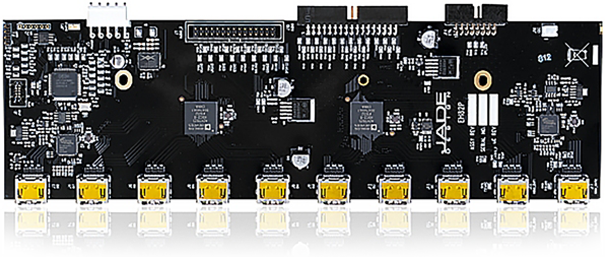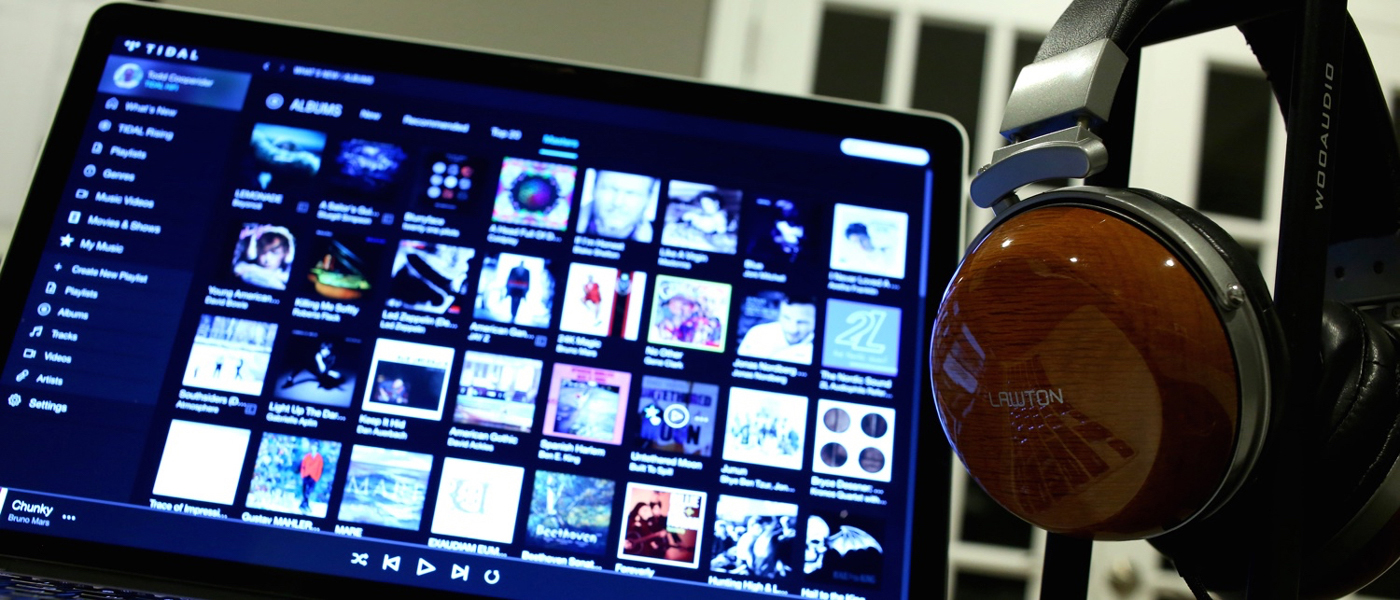Features nonetheless that we may not use because we aren’t sure how to use or turn on for that matter! The result has been some very complicated hardware with thick manuals (that are often never thoroughly read). Receivers and processors are quickly becoming computers, and it’s often said 90% of computer users use 10% of the features. It may be like that with home theater and audio equipment.
Step into your neighborhood audio/video store and prepare to be amazed. Just in the last year the upgraded picture and sound available for your home at competitive pricing will thrill you. Home Theater and Audio standards are rapidly changing and dramatically improving. We have sharper video resolution with 4K (and 8K being planned), and display options like HDR which look great and are going to sell a lot of new TVs. Get a look at 4K HDR movies on disc like the Revenant or Deepwater Horizon and you’ll be convinced.
New surround sound audio standards with Dolby Atmos and DTS:X with speakers overhead, behind and in front. Even stereo has new digital formats in high resolution audio with high sampling and high bit-rates.
For many people with high quality systems at home, the image and sound are often better than in your local cinemas, excepting of course IMAX theaters.
The changes look and sound great, but it comes at a cost, that leads us to……
Are potential customers put off by the current complex technology? Or how rapid changes in technology and new equipment becoming virtually outdated? It’s certainly possible, and I’ve heard this anecdotally from many shoppers.
We had a long pause between the first black and white TVs and color – about 14 years. But today, the technology changes almost yearly. How many years passed before tube television technology became projection TV and unto flat screen technology? VHS and Beta were replaced by DVD which looked great until we saw Blu-ray. High definition 1080p is being replaced by 4K discs and 4K streaming, and although the results are spectacular, the changes are happening too quickly and hardware becomes obsolete.
Secrets Sponsor
Additionally, the ever-increasing amount of speakers and complexity of getting everything to work together is daunting and stressful.
I was listening in when a couple was told by an AV salesman they would have to move all their furniture to accommodate the system they wanted. They left without buying. No surprise there. And that was before they even got to asking about how to hook everything up and where to hide the wires.
Readers of Secrets of Home Theater and High Fidelity are sophisticated. That’s why you are here reading this editorial. But remember that most people don’t share our passion or our ever-learning knowledge. If those people hesitate to buy or avoid buying at all, it weakens the industry we enjoy.
Let’s start with processors and receivers, because those are the components that change the most frequently. The remotes sometimes look like a Mission Impossible prop, and the back of these components are a bewildering array of jacks and wire terminals that would frustrate Scotty from Star Trek. Even the front panels of many of these devices look like the Space Shuttle cockpit, although some companies put the knobs and switches behind a front panel door. That’s fine for keeping a clean look, but be prepared for a shock when you flip the door open. A lot more buttons to push.

– Credit Pioneer Corp
To make matters worse, the HDMI specification seems to change every 20 minutes. Yes, the audio and video quality improves by leaps and bounds but the changes mean confusion about new cables, software updates and new equipment to take advantage of it. We’re confronted with new TVs that make our Hi-Def models seem positively old fashioned. HD is giving way to 4K (and 8K is on the horizon), stereo has evolved to 5.1 and then 7.1 and now Atmos – with speakers overhead, behind and in front. Only the floor of your home theater (so far) has been spared.

– Credit Onkyo USA
Let’s think about what happens when you dive into the upgrade pool. You buy a new spiffy 4K TV. Your Blu-ray movies look fine, but you’re not getting the highest quality video your display is able to give you. So you buy a new Blu-ray player that supports 4K discs. So time to buy some movies and that can mean double dipping. Sure you have a great 1080p copy of Pacific Rim, but everyone is raving about the 4K version with HDR, with good reason. You buy it, and start thinking about replacing other discs in your collection.
You plug it into your receiver or processor and guess what? That new HDMI version 2.0 isn’t passed by your formerly up to date control center. Yes, you can plug the video directly into your TV, and let the audio run through your now under-featured receiver, but oh no! No on-screen display! And so it goes: New speakers to support ATMOS? A new test disc perhaps, to replace the one you have for 1080p video and your kinda-sorta outdated audio system? It’s the slippery slope to upgrading everything. Will it pay off in a very much improved home theater experience? Yes it will. But can you afford it? How much do you want it?
Secrets Sponsor
There’s another angle here too. That’s the hassle factor and how enthusiastic you are about uprooting the home theater system you have that seemed so great a few months ago.
Most of my friends are pretty AV savvy, and they think nothing of checking the phase of speakers, or knowing whether a particular component needs to use optical, HDMI or analog outs. They move their subwoofers from place to place, looking for the ‘best spot’. I love the flexibility of having 8 HDMI inputs and 2 outputs on my processor at home, and I’m not arguing against flexibility. Almost every newcomer to Home Theater and HiFi has modest needs, but as you learn more and add more equipment, your needs evolve and expand.
Unfortunately, many people just won’t go through the trouble to comprehend all this, so they opt for something simple, a nice TV and its built-in audio. They are compromising out of fear, and missing out on the great fun a good AV setup can provide.
One of the big pain points is getting a system set up. That could be simplified with better, more readable manuals, even though I know most people don’t read them. I’m guilty as charged. I have enough knowledge to skip the setup stuff, and use the manual more as a reference for features I don’t understand. Still, manuals are often written by techs that don’t see things the way a less knowledgeable user would.
I love all the features on my home theater processor. And I wouldn’t give them up. But for many people the number of options are confusing and by on-screen menus that can be really hard to understand. I don’t want to take away the flexibility we have in our home AV equipment. I just want to make it simpler to understand and use. Some companies do great setup screens. Others are pretty horrible.
The industry is just beginning to show how AI (artificial intelligence) can be used to ease the setup process. Some of the Harmony and the Ray remotes do this very well, and I’d like to see more at the processor/receiver level. Let the receiver ‘interview’ the user, giving easy instructions on things like speaker placement, crossover settings surround modes and getting HDMI devices plugged in. Or better yet, recommend settings and why!
Even with the best automated setups and well written manuals, questions will come up, and that means calling someone. We need tech support numbers that don’t answer calls with a recording that says “Your call is important to us” while you wait and wait to talk to a real, non-electronic person.
Since processors and receivers are the most likely parts of your system to change with evolving technology, how about making those components more modular? Emotiva, for example, has just announced a swap-in HDMI board for the 2 year old XMC-1 processor that provides HDMI 2.0b (HDR 10 and Dolby Vision).

– Credit Emotiva
That brings that device right up to date, saving customers the high cost of buying a whole new processor to chase the newest video and audio specs. The Emotiva approach should be the rule in the industry, not the exception. We are beginning to see this around the industry, but it’s not a panacea, because some designs aren’t easily upgradable with board swaps. At some point, you’ll need to buy something new. I’d just like to see your receiver last longer. Like computers I mentioned, they become obsolete quickly.
McIntosh, Marantz, Anthem and others provide firmware updates, but hardware upgrades are pretty rare. They shouldn’t be. Sure, everyone wants to sell consumers a new receiver, but think of the loyalty that will result if there are easy, reliable upgrades.
Ideally, getting started with a sophisticated home theater or Hifi setup should be almost frictionless. Right now it isn’t, which is why I often get late night calls from frustrated friends trying to get everything to work.
AV equipment is a big investment. The industry should future-proof its products as much as possible, make them really easy to hook up, and make upgrading as painless and reasonable as possible. Sure, the home theater industry will keep inventing and your equipment (at least some of it) will keep going out of date. I think most of our readers are pretty enthusiastic about getting the best system they can afford. I want the industry to continue to innovate. I also want my equipment to last as long as possible, and I’m not sure that is the case today, especially with some receivers and processors. More innovation and modularity based on more upgradable designs where feasible should lead to more sales and consumer confidence that your purchase won’t go out of date. The equipment makers who innovate will be rewarded with more sales and higher profits. That will lower prices which everybody likes, and keep my equipment up to date for a longer time. Everybody wins.


